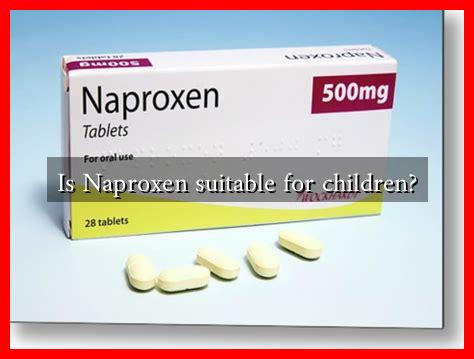-
Table of Contents
Is Naproxen Suitable for Children?
Naproxen is a nonsteroidal anti-inflammatory drug (NSAID) commonly used to relieve pain, reduce inflammation, and lower fever. While it is widely prescribed for adults, its use in children raises important questions regarding safety, efficacy, and appropriate dosages. This article explores whether naproxen is suitable for children, examining its benefits, risks, and guidelines for use.
Understanding Naproxen
Naproxen works by inhibiting the production of certain chemicals in the body that cause inflammation and pain. It is often used to treat conditions such as:
- Arthritis
- Muscle pain
- Menstrual cramps
- Headaches
- Fever
While naproxen is effective for these conditions in adults, its application in pediatric medicine is more nuanced.
Age Considerations for Naproxen Use
The safety and efficacy of naproxen in children depend significantly on their age. According to the American Academy of Pediatrics, naproxen can be used in children aged 2 years and older. However, it is crucial to follow specific guidelines regarding dosage and duration of treatment.
Dosage Guidelines
The appropriate dosage of naproxen for children is typically based on their weight. The general recommendation is:
- For children aged 2 to 11 years: 5 to 7 mg/kg every 12 hours, not exceeding 15 mg/kg per day.
- For children aged 12 years and older: The adult dosage can be applied, usually starting at 250 mg to 500 mg every 12 hours.
It is essential to consult a healthcare provider for personalized dosing recommendations, as individual health conditions may affect the appropriate dosage.
Potential Risks and Side Effects
While naproxen can be effective for managing pain and inflammation in children, it is not without risks. Some potential side effects include:
- Gastrointestinal issues (e.g., stomach pain, nausea, vomiting)
- Increased risk of bleeding
- Kidney problems
- Allergic reactions (e.g., rash, difficulty breathing)
Parents should be vigilant for any adverse reactions and seek medical attention if severe side effects occur. Additionally, children with certain pre-existing conditions, such as asthma or kidney disease, may be at higher risk for complications when taking naproxen.
Case Studies and Research Findings
Research has shown that naproxen can be effective in treating various conditions in children. A study published in the journal *Pediatrics* found that naproxen was effective in managing pain associated with juvenile idiopathic arthritis, providing significant relief without serious side effects in most cases. However, the study also emphasized the importance of monitoring for gastrointestinal issues, particularly in long-term use.
Another case study highlighted a 10-year-old boy who was treated with naproxen for post-operative pain following an appendectomy. The child experienced significant pain relief without any adverse effects, demonstrating that, when used appropriately, naproxen can be a valuable tool in pediatric pain management.
Conclusion: Weighing the Benefits and Risks
In conclusion, naproxen can be suitable for children aged 2 years and older when used under the guidance of a healthcare professional. Its effectiveness in managing pain and inflammation is well-documented, but parents must be aware of the potential risks and side effects. Proper dosing and monitoring are crucial to ensure the safety of children taking this medication.
Before administering naproxen or any medication to a child, it is essential to consult with a pediatrician to evaluate the specific needs and health conditions of the child. For more information on pediatric medication guidelines, you can visit the American Academy of Pediatrics.
Ultimately, while naproxen can be a suitable option for managing pain in children, careful consideration and professional guidance are paramount to ensure their safety and well-being.

